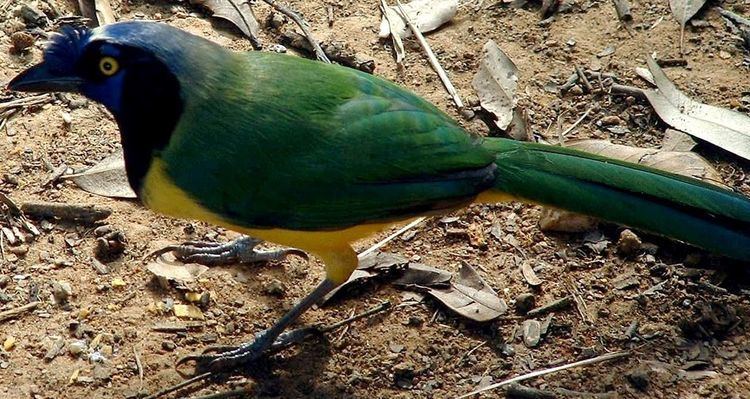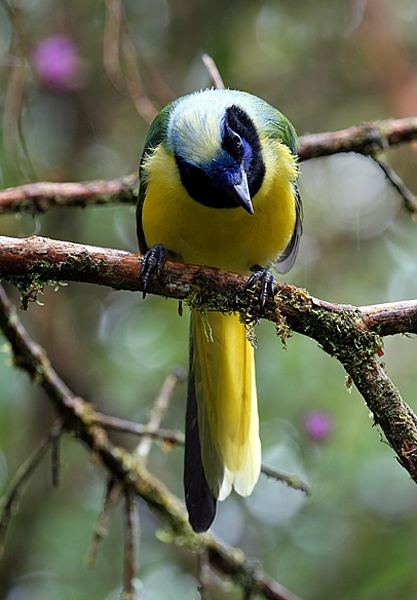Order Passerine | Class Aves Phylum Chordata Rank Subspecies | |
 | ||
Similar Cyanocorax, Green jay, Turquoise jay, Violaceous jay, Plush‑crested jay | ||
P1010005 inca jay
The Inca jay (Cyanocorax yncas yncas) is a bird species of the New World jays, which is endemic to the Andes of South America.
Contents
- P1010005 inca jay
- Inca jay cyanocorax yncas yncas biodiversity shorts 13 1
- Description
- Taxonomy
- Breeding
- Feeding
- Voice
- Distribution and habitat
- References
Inca jay cyanocorax yncas yncas biodiversity shorts 13 1
Description

29.5–34.3 cm (11.6–13.5 in). The crown can appear mostly white, with blue limited to the frontal crest and nape. A black bib forms a broad band up to the sides of the head as well as a stripe through the eye line and one above it. The breast and underparts typically are bright yellow. The upper parts are rich green. It has large nasal bristles that form a distinct tuft in some subspecies, but are less developed in others. The color of the iris is bright yellow.
Taxonomy
The bird is usually lumped with the green jay of North America. Somewhat confusing in classification, the inca jay is then considered a subspecies of the green jay, even though the inca jay is nominate.
Breeding

Inca jays usually build a nest in a tree or in a thorny bush or thicket, and the female lays three to five eggs. Only the female incubates, but both parents take care of the young. In Colombia, Inca jays are recorded as retaining offspring for several years, and those young help the parents raise more chicks. In Venezuela, they have been observed being victims of nest parasitism by giant cowbirds.
Feeding
Their basic diet consists of arthropods, vertebrates, seeds, and fruit.
Voice

As with most of the typical jays, this species has a very extensive voice repertoire. The bird's most common call makes a rassh-rassh-rassh sound, but many other unusual notes also occur. One of the most distinctive calls sounds like an alarm bell.
Distribution and habitat
The range extends southwards in the Andes from the Colombia and Venezuela through Ecuador, Peru, and Bolivia.

